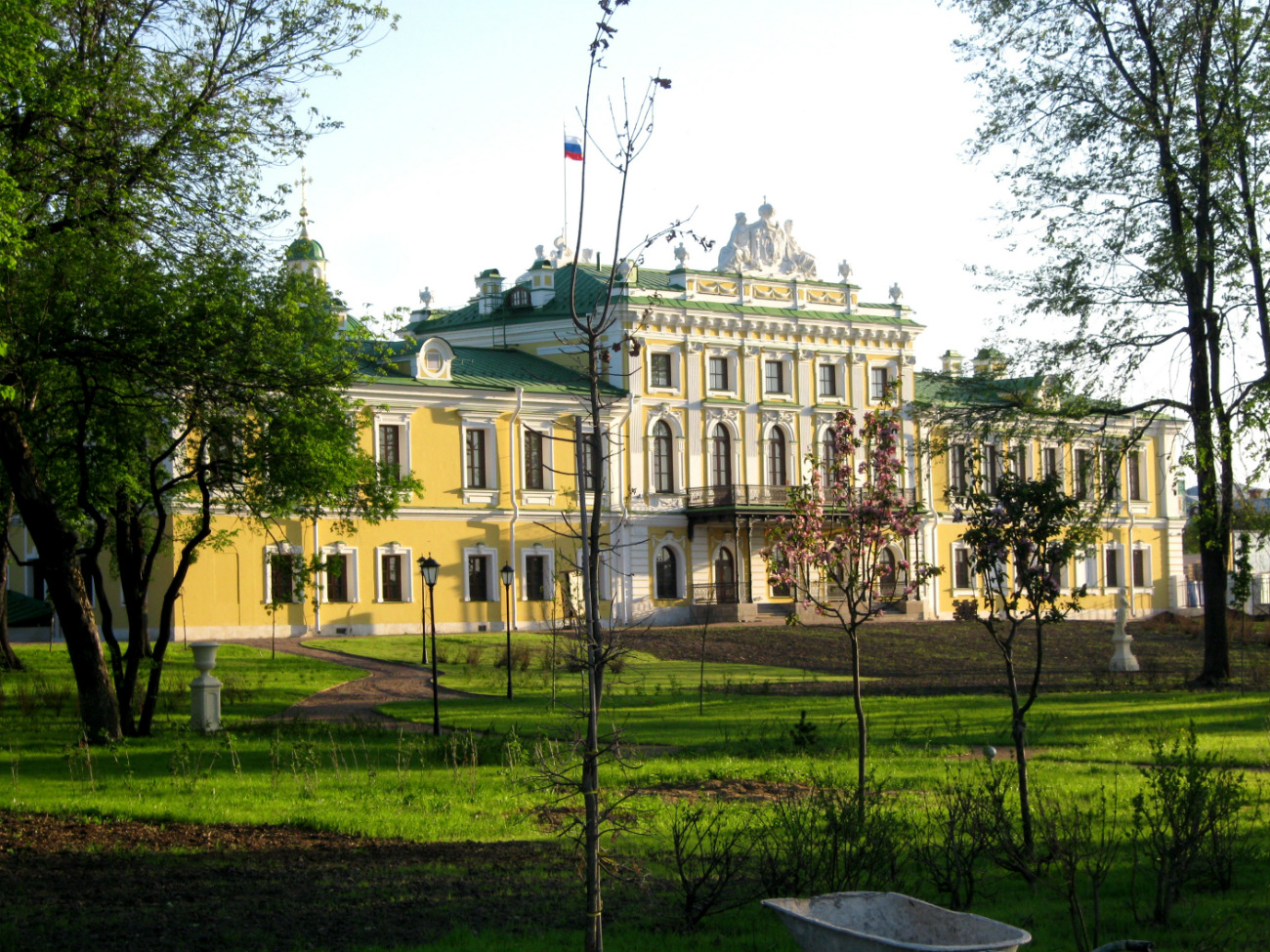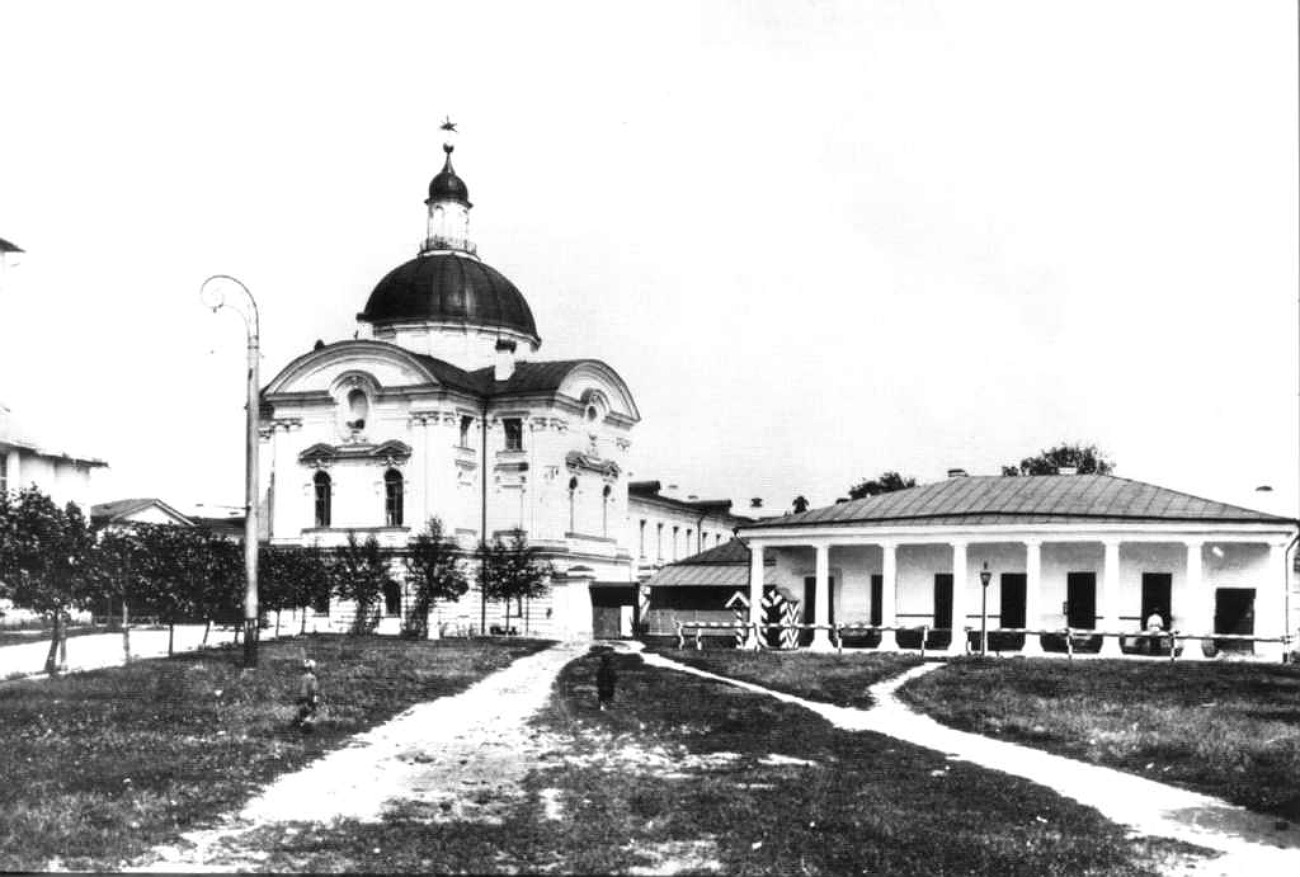8 facts about Catherine the Great's Imperial Palace in Tver

Travel Palace in Tver (this picture was taken in 2016).
Georgiy Dolgopskiy Travel Palace in Tver (picture was taken in 2016) / Source: Georgiy Dolgopskiy
Travel Palace in Tver (picture was taken in 2016) / Source: Georgiy Dolgopskiy
1. It was built on the "Tsarist" road
In 1712 Peter the Great transferred the Russian capital from Moscow to the recently built St. Petersburg. Afterwards the road between the two cities became an important "governmental route." In the course of the following two centuries, as the road was used by the Tsars, towns and monasteries were erected alongside it. In the second half of the 18th century, during Catherine the Great's reign, the road was paved with stone, and 11 grand travel lodges were built for the empress to rest in - one every 40 miles. The palace in Tver's Old Town, situated near the Volga River, is one of the most sumptuous.
2. Architecturally, it differs from the other palaces
Most of the travel lodges are not very architecturally expressive: The modest two-story edifices with a triangular frontispiece in the center were built according to one model and most of the time, when not required to host the empress, they functioned as post offices and lodgings for imperial officials, members of court and other guests. The palace in Tver was an exception. It was constructed in the style of the grand St. Petersburg residences and was used for balls and receptions. In 1767 Catherine stopped at the palace during an important journey from St. Petersburg to Simbirsk (now Ulyanovsk, about 560 miles east of Moscow) in which she was accompanied by almost 2,000 people, including the Austrian, French and British ambassadors. Only the Petroff Palace in Moscow could compete with it in terms of the grandeur of its decorations.
3. It occupies the site of a bishop's house that had burned down
The beginning of major construction in Tver began after the fire of 1763, which destroyed the wooden Kremlin and other ancient buildings. Architect Peter Nikitin, creator of the general plans for many provincial Russian towns (including Kaluga and Torzhok) went to Tver to restore the city in accordance with the new approach to town planning. It is thanks to him that Catherine the Great remarked that Tver had become "the second most beautiful city after St. Petersburg." Nikitin designed the palace for the area on the banks of the Volga where the house of Tver's bishop had once stood.
4. Designed by famous architects
The best architects of the time were hired to build and rebuild the palace. Nikitin's assistant during construction was the young Matvey Kazakov, who later would go on to build the Kremlin Senate in Moscow, Moscow University and Petroff Palace. Jean-Baptiste Vallin de la Mothe, who built the Small Hermitage and the Academy of Arts in St. Petersburg, designed the interior décor for the bedchamber and other rooms. At the beginning of the 19th century the palace was reconstructed for new owners by Carlo Rossi and Joseph Bové. Rossi was the architect for the General Staff Building on Palace Square in St. Petersburg, while Bové built the Bolshoi Theatre. The icons for the palace's magnificent church were painted by the best portraitist of Catherine's time, Vladimir Borovikovsky.
 Carlo Rossi. View of Travel Palace in Tver, 1800
Carlo Rossi. View of Travel Palace in Tver, 1800
5. The interiors resembled those of imperial palaces in St Petersburg
Initially, the interiors were executed in the manner of the grand residences. They contained luxury textile wallpaper, Dutch ovens with tiles, parquet floors, plaster columns that imitated marble, extravagant stuccowork, mirrors, wrought iron stairs, bronze chandeliers, paintings and sculptures. It is known that the empress fell in love with the palace and that contemporaries mentioned its sumptuous decorations in their memoirs.
6. It was a social hub
Early in the 19th century the palace's function changed. Besides hosting the emperors during their travels, it became the residence of the governor general of Tver Region, George Duke of Oldenburg and his wife Grand Duchess Ekaterina Pavlovna, sister of Emperor Alexander I, who personally participated in the palace's remodelling. At the time the palace became one of the centers of Russia's social life and a fashionable literary salon. It was here that illustrious historian Nikolay Karamzin read to Alexander I chapters from his History of the Russian State.
 Archive photo of the palace / Public domain
Archive photo of the palace / Public domain
7. Restoration began in 2012
Restoration of the palace began in 2012. During Soviet times key elements of the décor were lost and many objects stolen. Now reconstruction work has returned the palace to its original splendour. The pictorial panel painted by Russian artist of Italian descent, Fyodor Bruni was restored on the grand staircase and the Canaletto canvases decorating it transferred to the museum halls. In particular, the palace had managed to preserve its luxurious sets of furniture featuring gilded sphinxes on the armrests that were designed by Carlo Rossi, and armchairs with swans created by another celebrated architect, Andrey Voronikhin, who designed St. Petersburg's Kazan Cathedral.
8. Before the revolution it was a museum
For the last 50 years the halls of the palace have housed the Tver Regional Art Gallery. But it had already become a museum well before the Bolshevik Revolution. In 1894 an exhibition of Moscow and St. Petersburg artists was organized in the palace and two years later the building was turned into a public historical-archaeological museum. In the 1960s paintings by famous 18th and 19th century Russian painters such as Borovikovsky, Levitan, Korovin and Serov were put on display in halls that had been restored after the destruction wrought during World War Two.
Read more: Gatchina Palace: Catherine the Great’s lover, her son and other stories
If using any of Russia Beyond's content, partly or in full, always provide an active hyperlink to the original material.
Subscribe
to our newsletter!
Get the week's best stories straight to your inbox